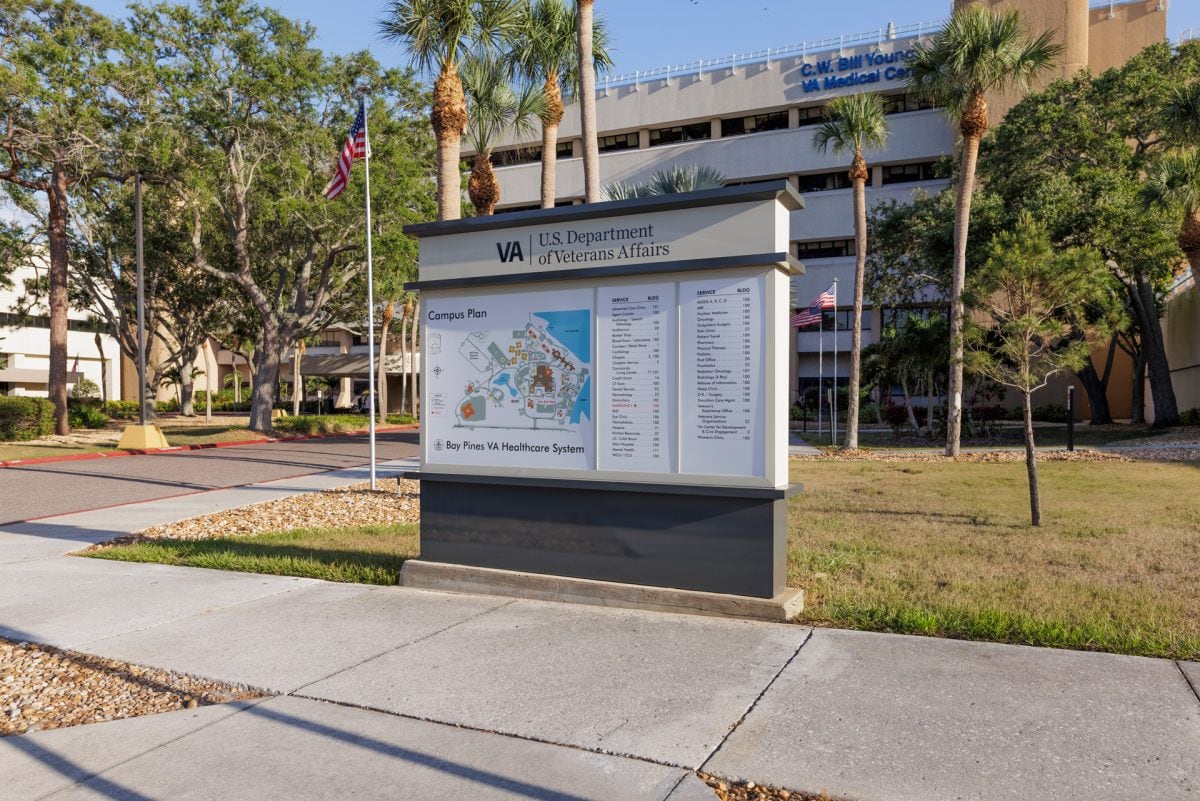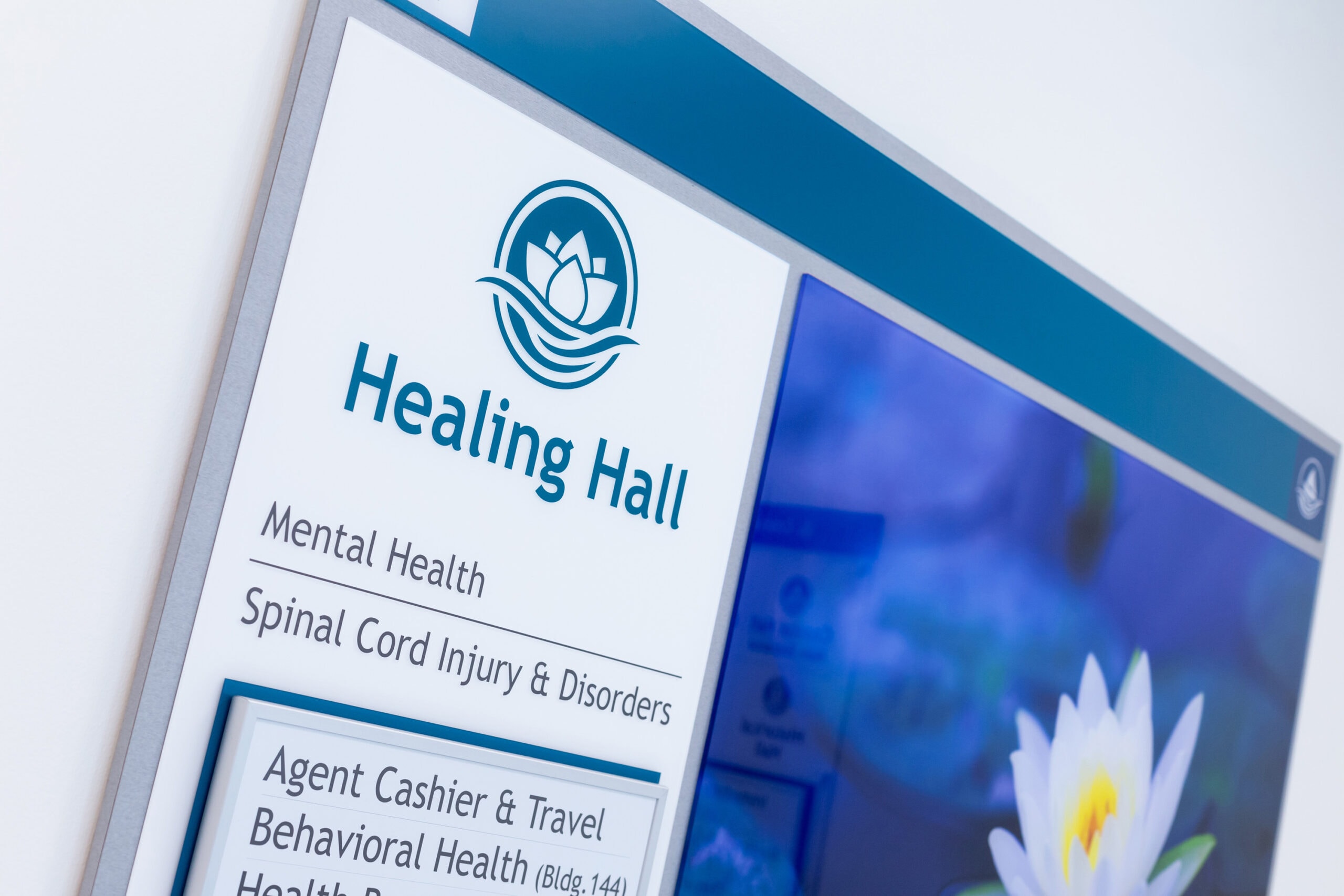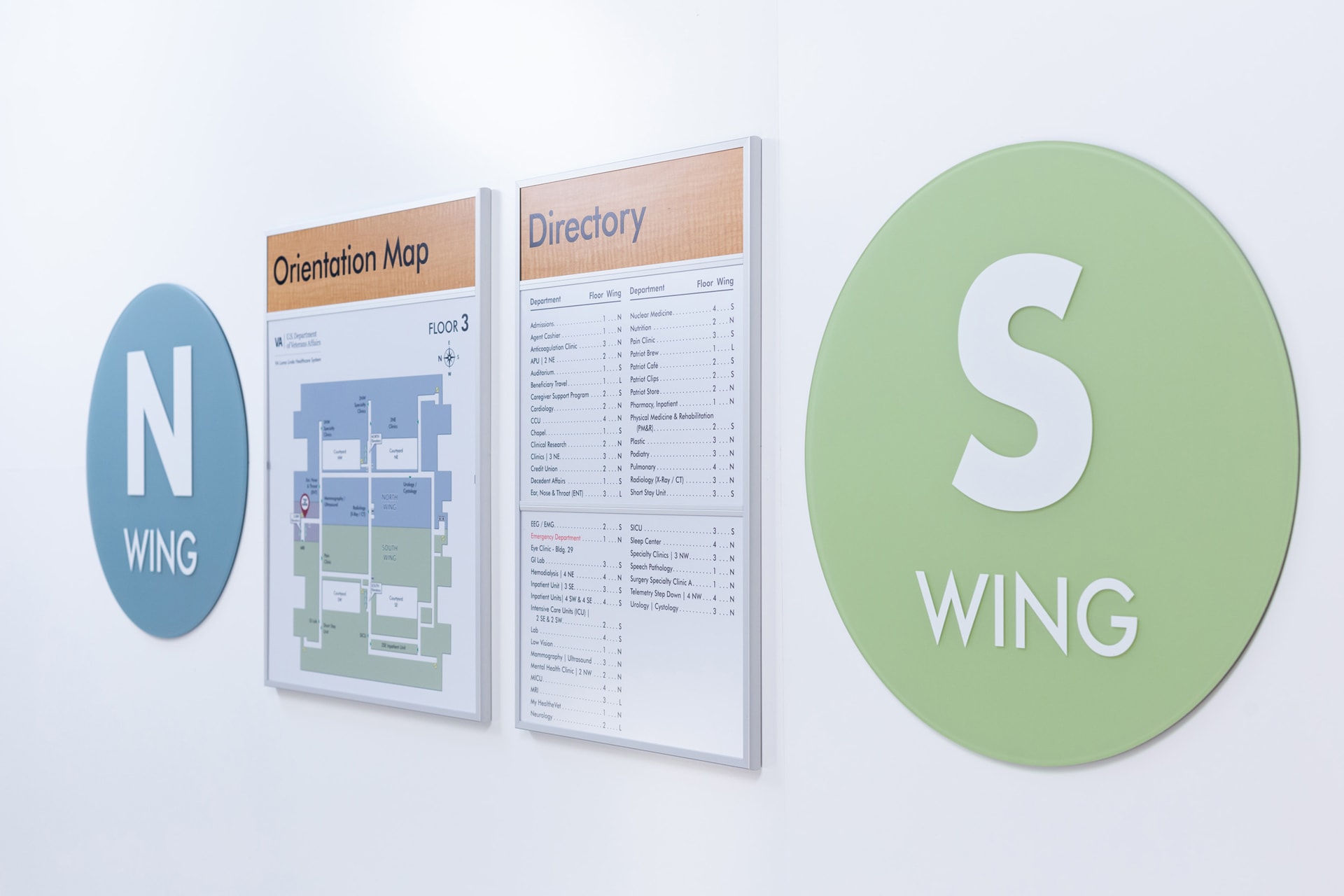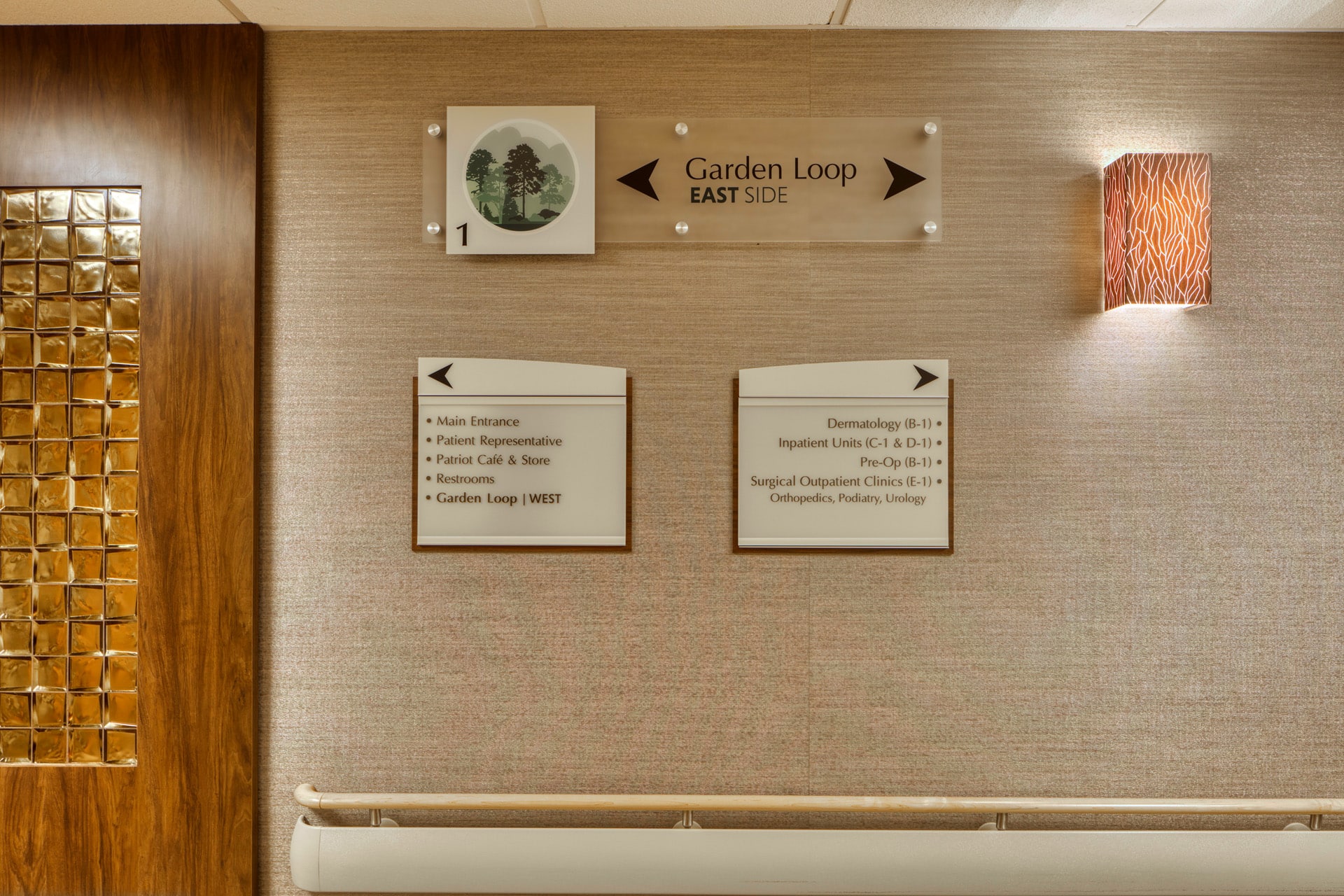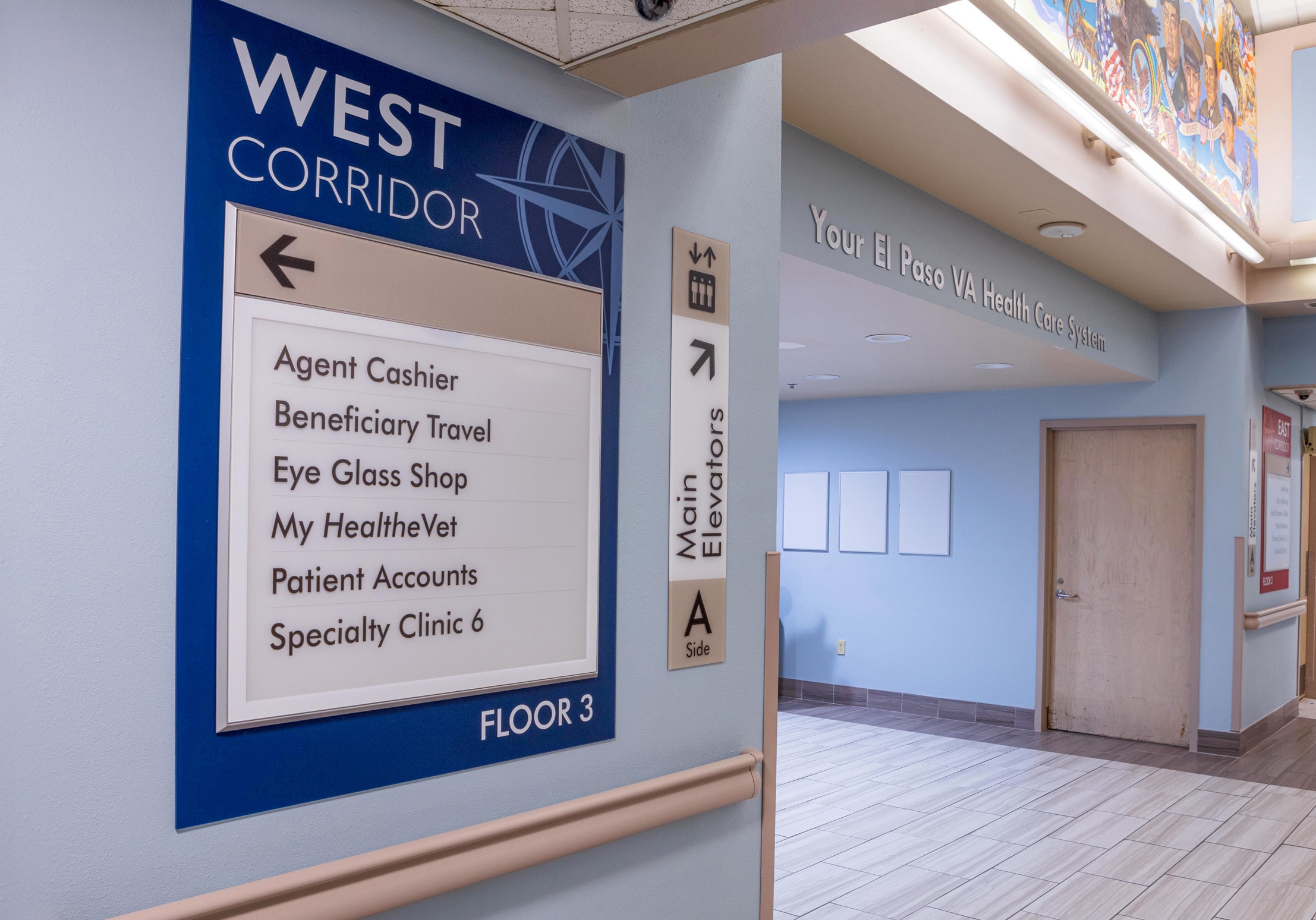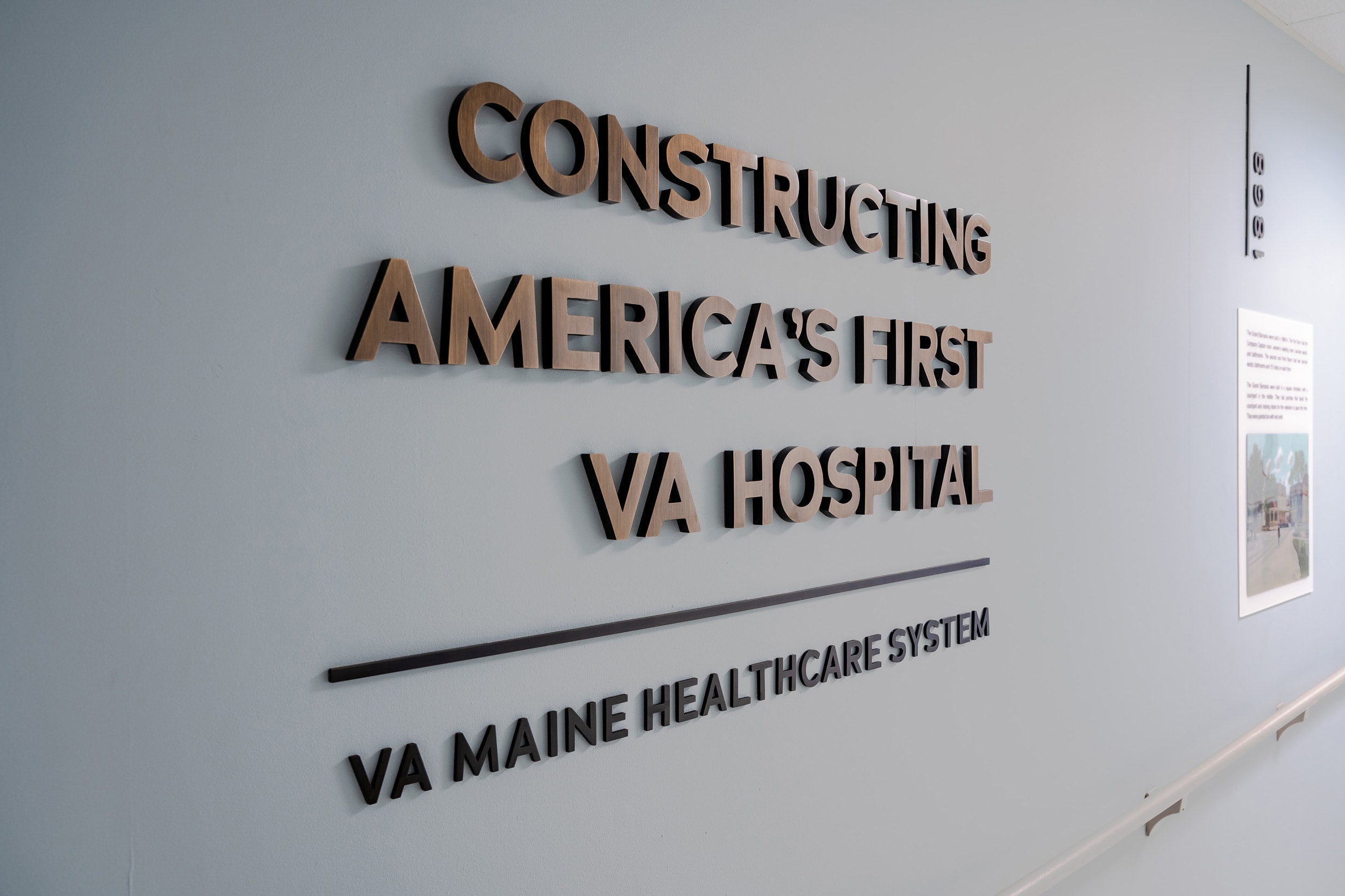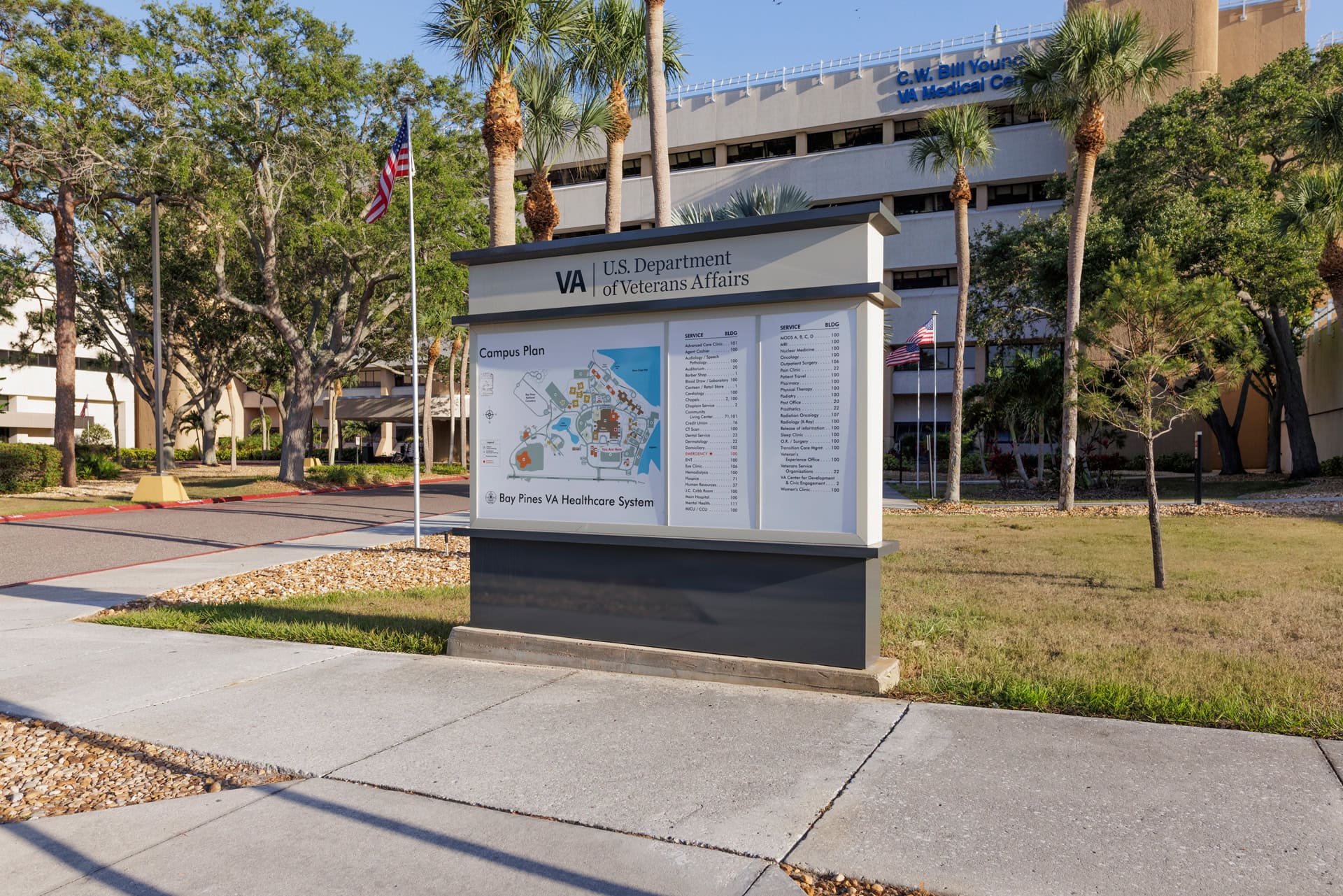
Modernizing Wayfinding Infrastructure to Improve Care Delivery Across One of the VA’s Most Active and Complex Medical Facilities
LOcation:
Bay Pines, Florida
highlights:
- Campus Wayfinding Master Plan
- Monumental Campus Entry Pylons
- Vehicular and Pedestrian Signage Overhaul
- Enhanced Emergency Signage
- Identification of Buildings and Entrances
- Main Hospital Interior Signage and Wayfinding Design
- Updatable Directionals and Department Identification
- Map and Policy "Welcome" Walls at Entrances
- Community Living Center (CLC) Wayfinding and Neighborhood Identification
CHALLENGE:
Situated on the Gulf Coast just west of St. Petersburg, VA Bay Pines is one of the largest and most scenic medical campuses in the Veterans Health Administration. Serving nearly 4,000 patients each day, the historic campus spans hundreds of acres and includes a complex network of buildings, roads, and pedestrian pathways.
The campus' sign system had reached the end of its lifecycle where simple maintenance and replacements were no longer effective. In addition, operational transitions were taking place, one of which would move primary care out of the Main Hospital to another building. To support accessibility, safety, and a seamless patient experience, a comprehensive wayfinding overhaul was undertaken—enhancing everything from emergency signage to branded patient routes, campus and hospital maps, and zone identification.
SOLutions:
Campus Wayfinding Master Plan:
To simplify orientation across the expansive campus, the site was divided into four clearly defined regions: North, South, East, and West Campus. Scattered parking lots were consolidated into a coherent system and boldly designated by name and number, aligned with their respective campus regions.
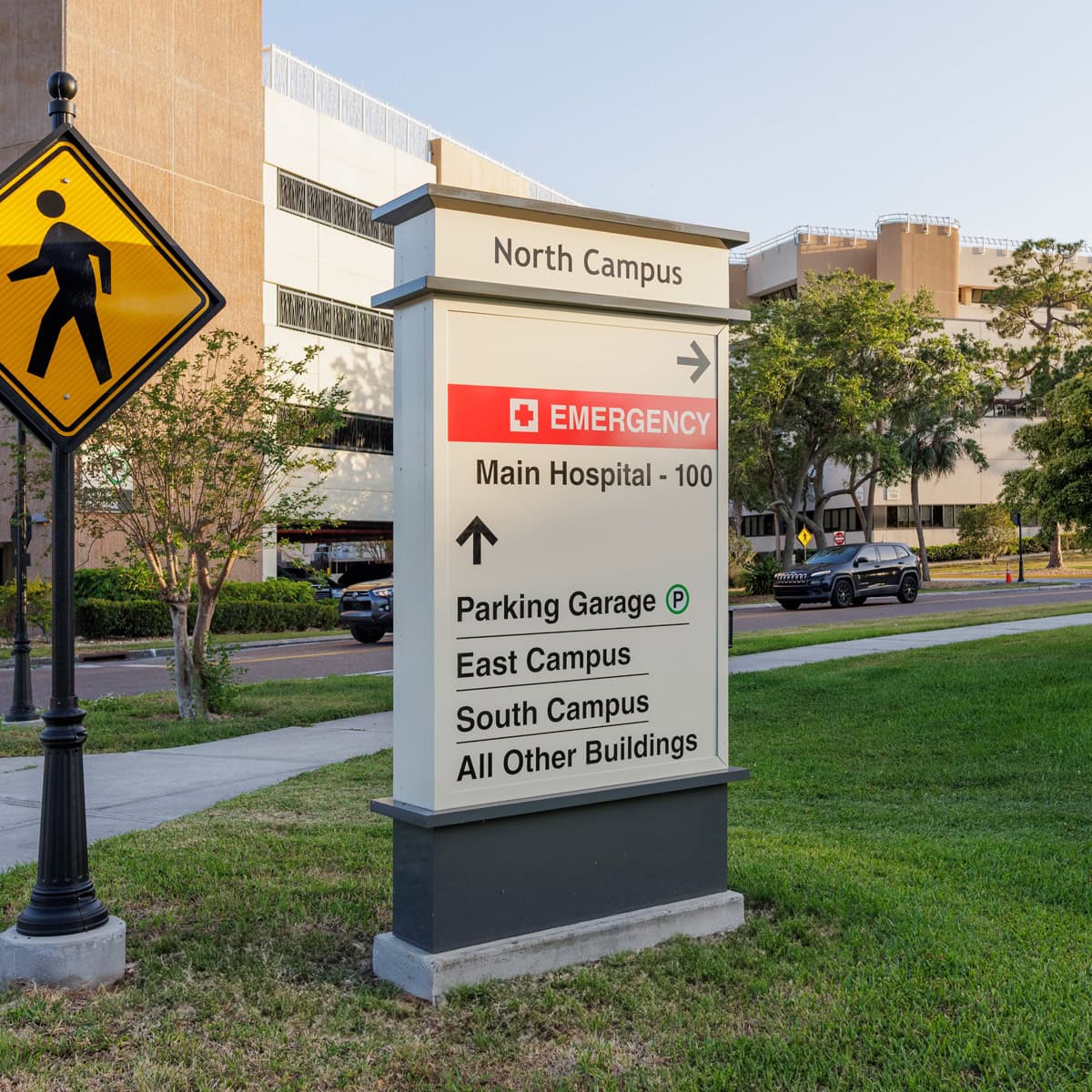
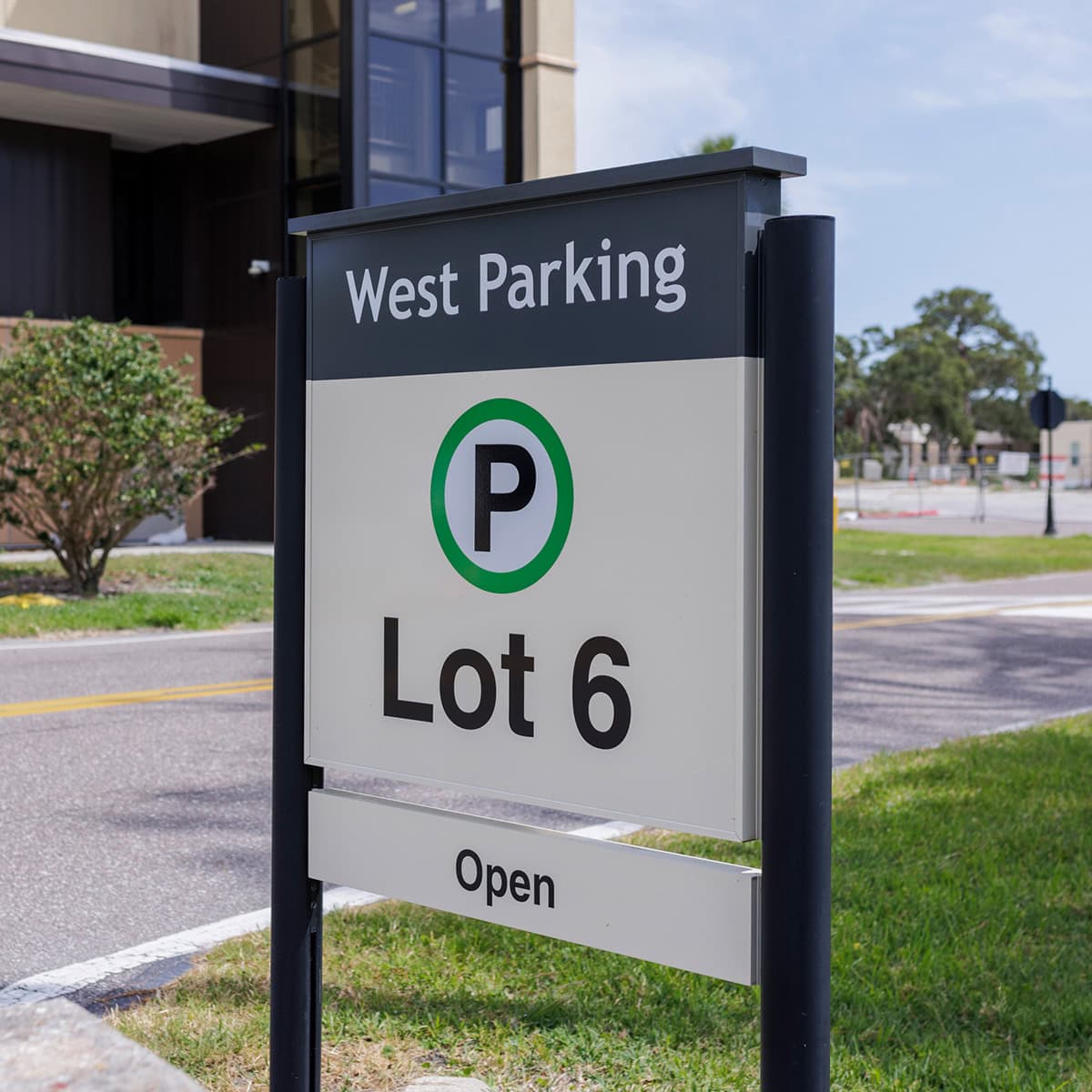
Monumental Campus Entry Pylons:
Positioned at a high-traffic, high-visibility intersection, the primary North Campus entrance serves as both a prominent first impression and a key decision point for arriving visitors. Monumental pylons with integrated wayfinding and digital display were installed to create clarity, establish identity, and support intuitive navigation from the moment of arrival.
Vehicular and Pedestrian Signage Overhaul:
Vehicular and pedestrian pathways were reimagined with scaled signage components tailored to each environment. Implementation followed a phased strategy across the campus’s inner and outer roadway loops and primary pedestrian corridors to ensure clarity and continuity at every stage. A standardized family of components was developed to address the full range of site conditions and establish a consistent, maintainable sign system for future updates and expansion.
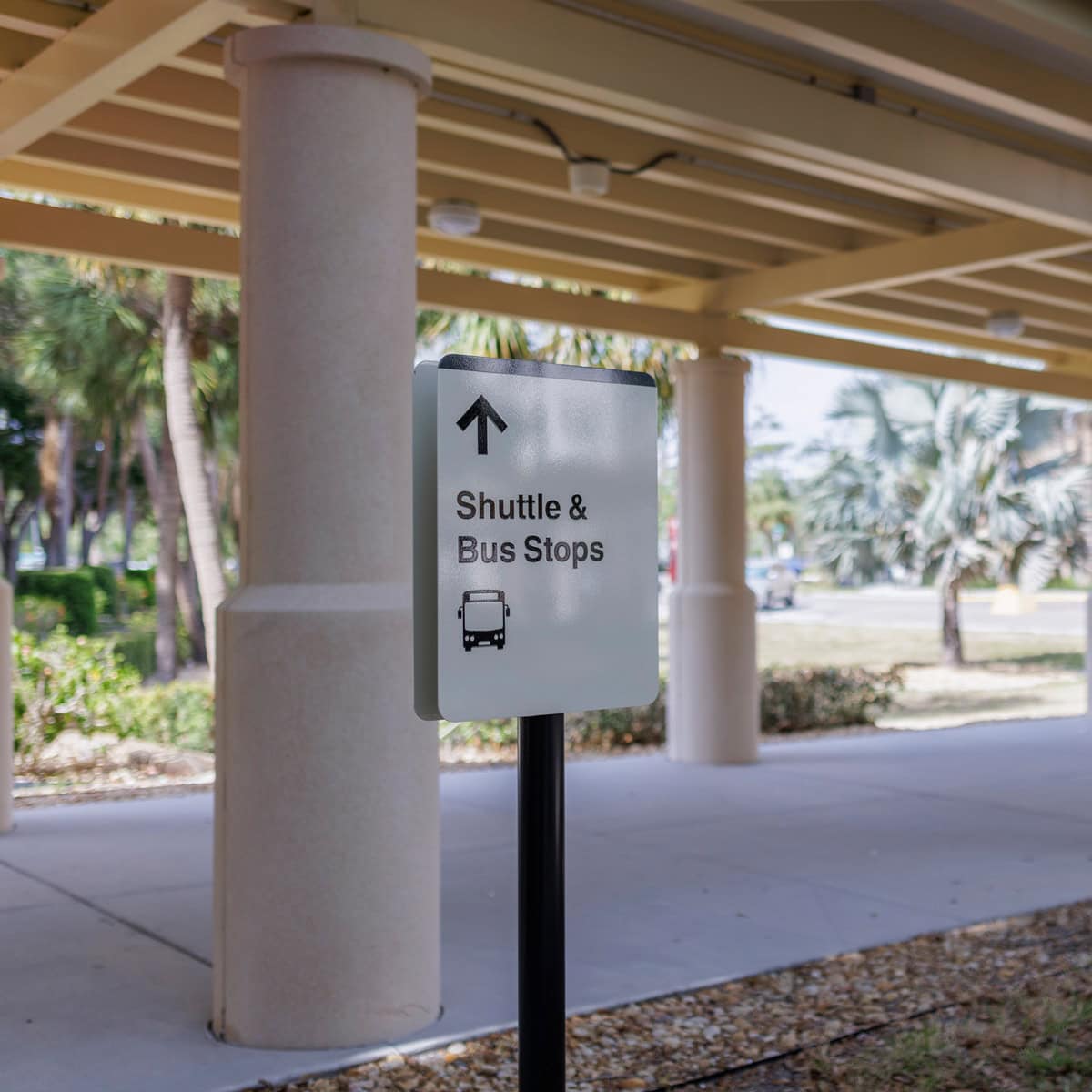
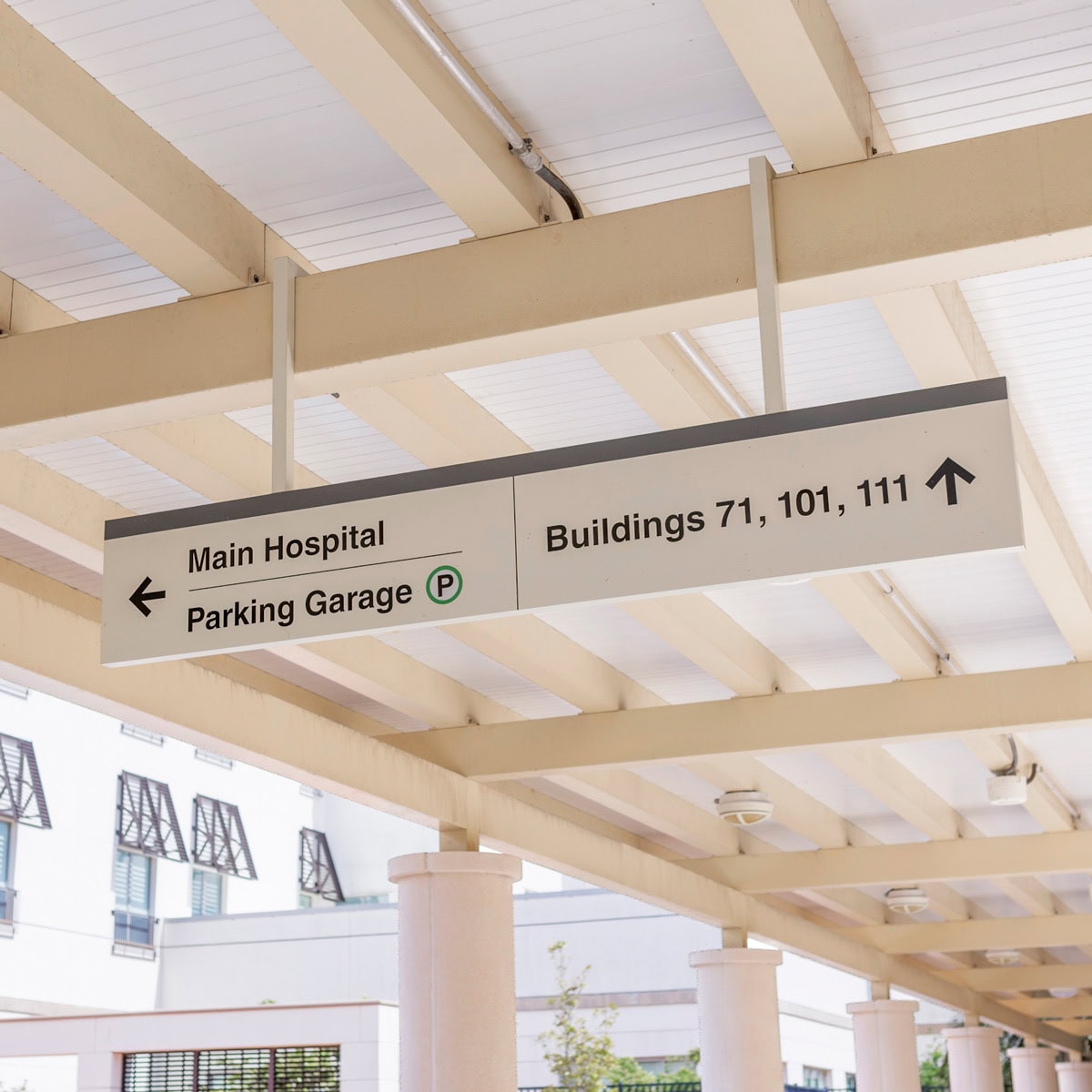
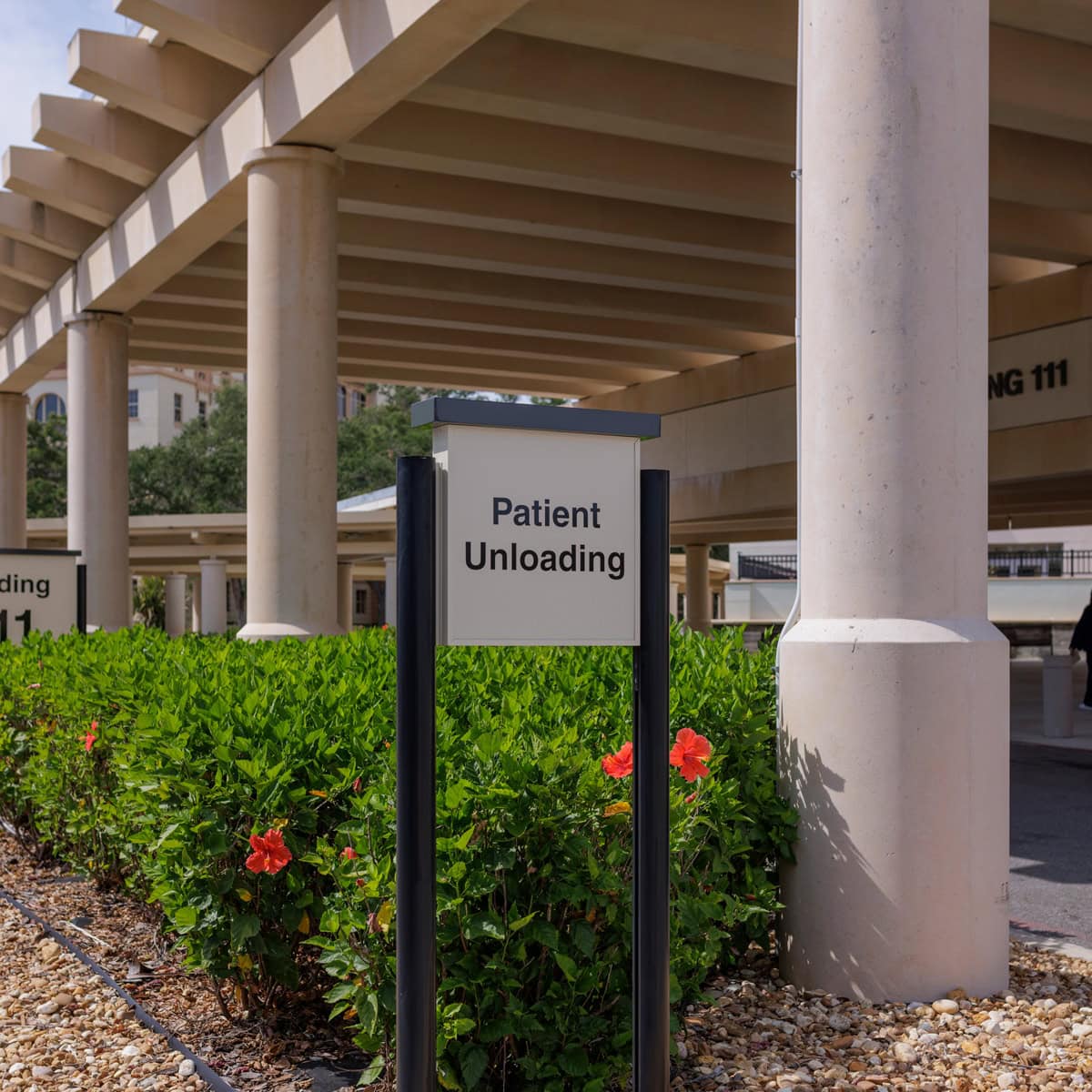
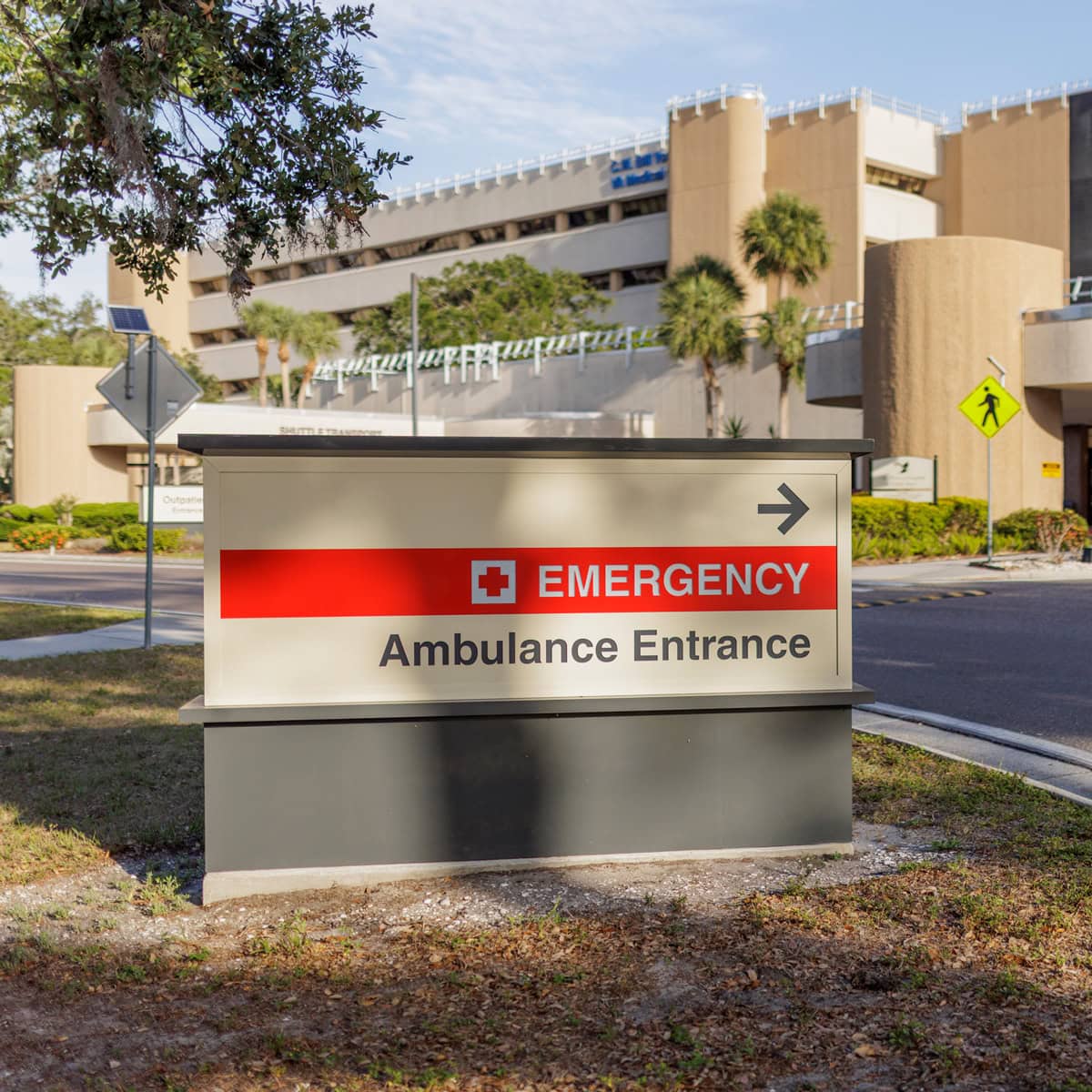
Enhanced Emergency Signage
Emergency signage was upgraded at both vehicular and pedestrian scales to support faster, more intuitive response routes. Improved visibility, and standardized placement ensure emergency messages are clear and immediately recognizable. These upgrades enhance safety while aligning with the broader campus sign system.

Identification of Buildings and Entrances
Monumental signage and large-scale architectural letters were applied to clearly identify buildings and create a strong visual presence across campus. With seven public entry points—each with varying hours of operation—unique names were assigned and prominently displayed on signage and maps. This helped establish a logical information hierarchy to reduce confusion and support smooth patient arrivals.

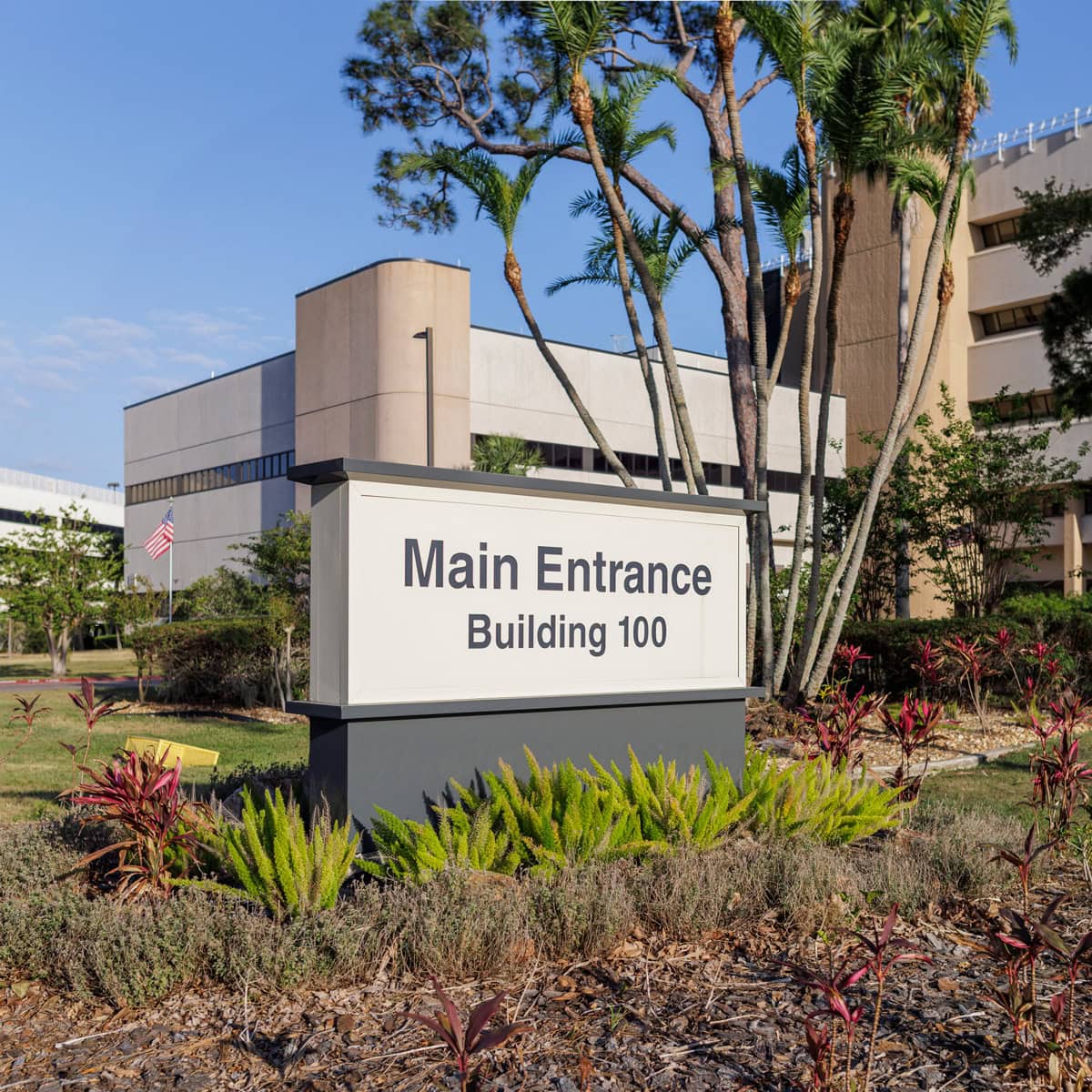
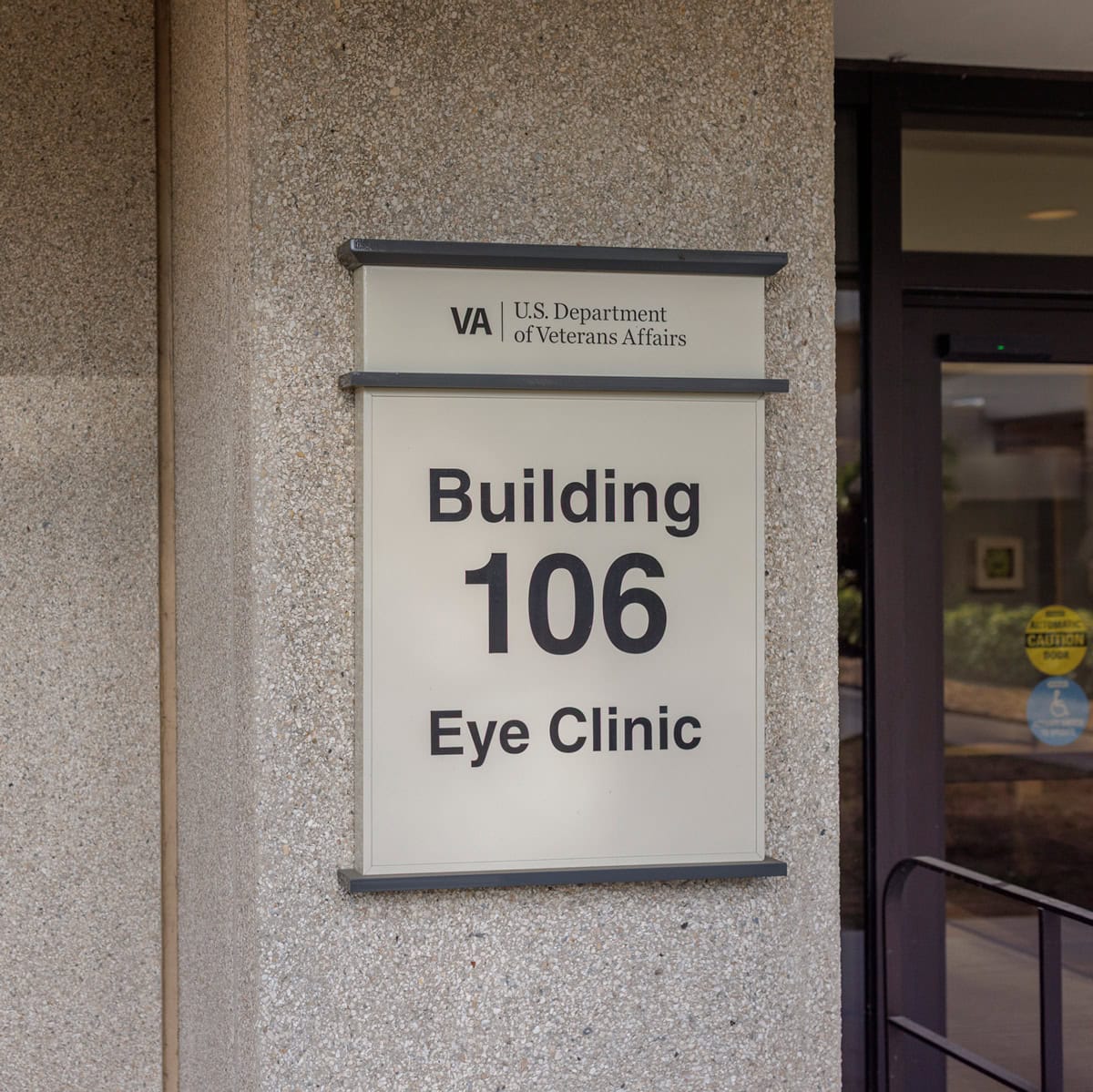
Main Hospital Primary Pathway
The biggest challenge to wayfinding at VA medical centers is the constant evolution of the facility, both operationally and architecturally. Key outpatient services including Primary Care were moving out of the Main Hospital where they had been for years to a separate building in West Campus. This created a challenging route for Veterans to navigate as their journey may begin at the Patient Garage in East Campus. To reduce confusion and create an optimal route for Veterans from one end of the hospital to the other, a branded pathway was highlighted on directional signage and maps.


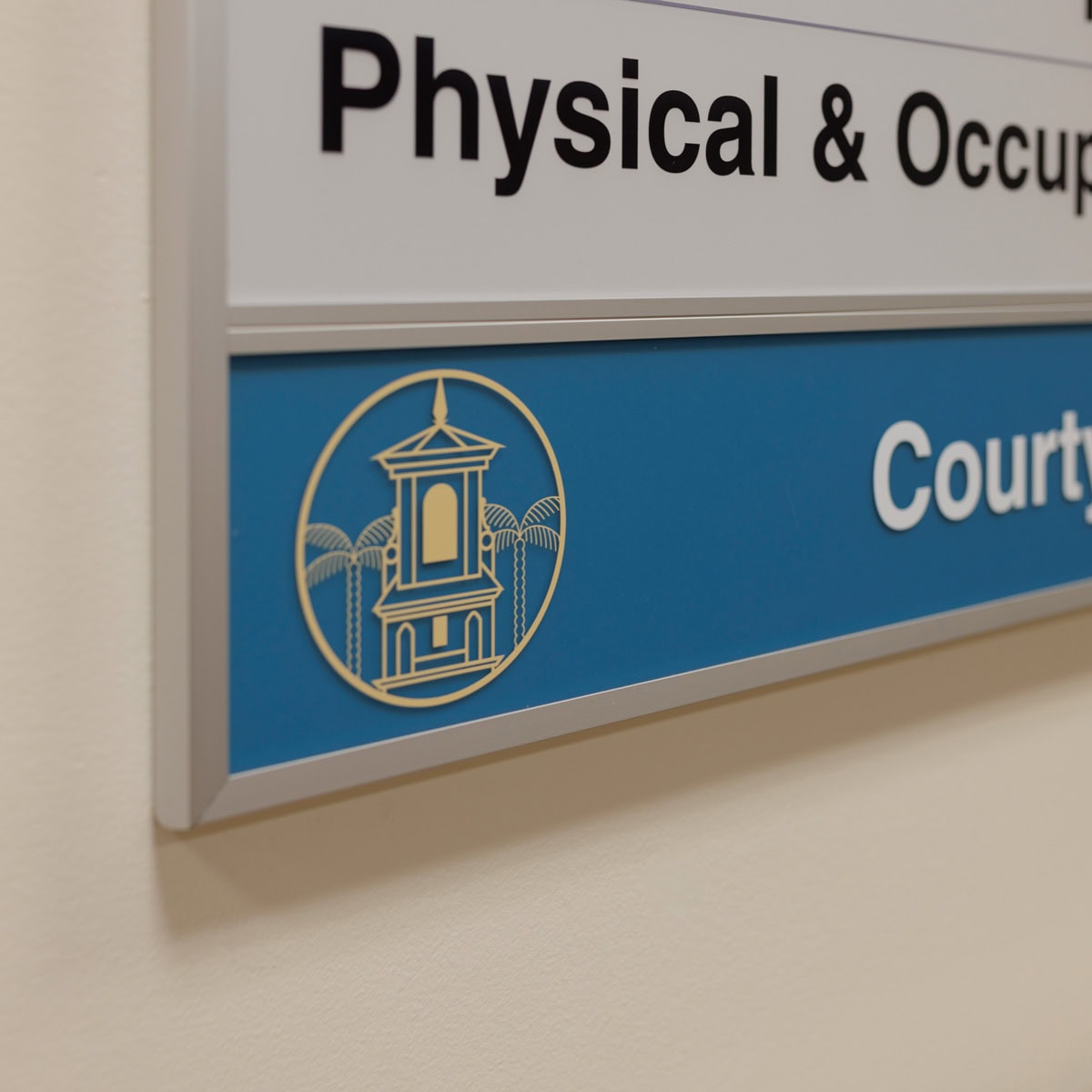
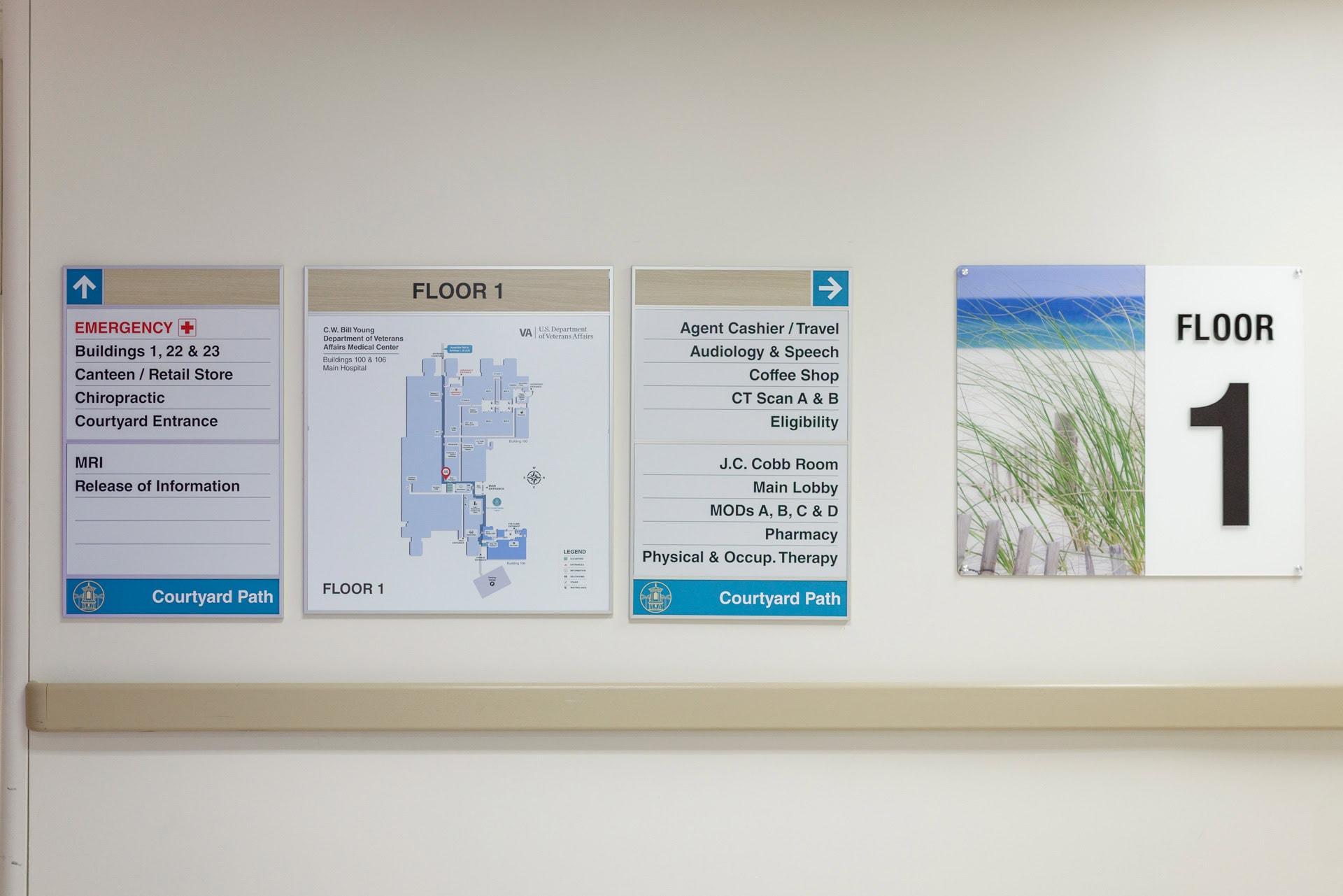
Updatable Directionals and Department Identification
The exceptionally long hallways in the Main Hospital create farther viewing distances, so large updatable directional signs were placed at intersections and decision points. Department entrances are now clearly identified and updatable information signs were added to help reduce the clutter of paper postings.

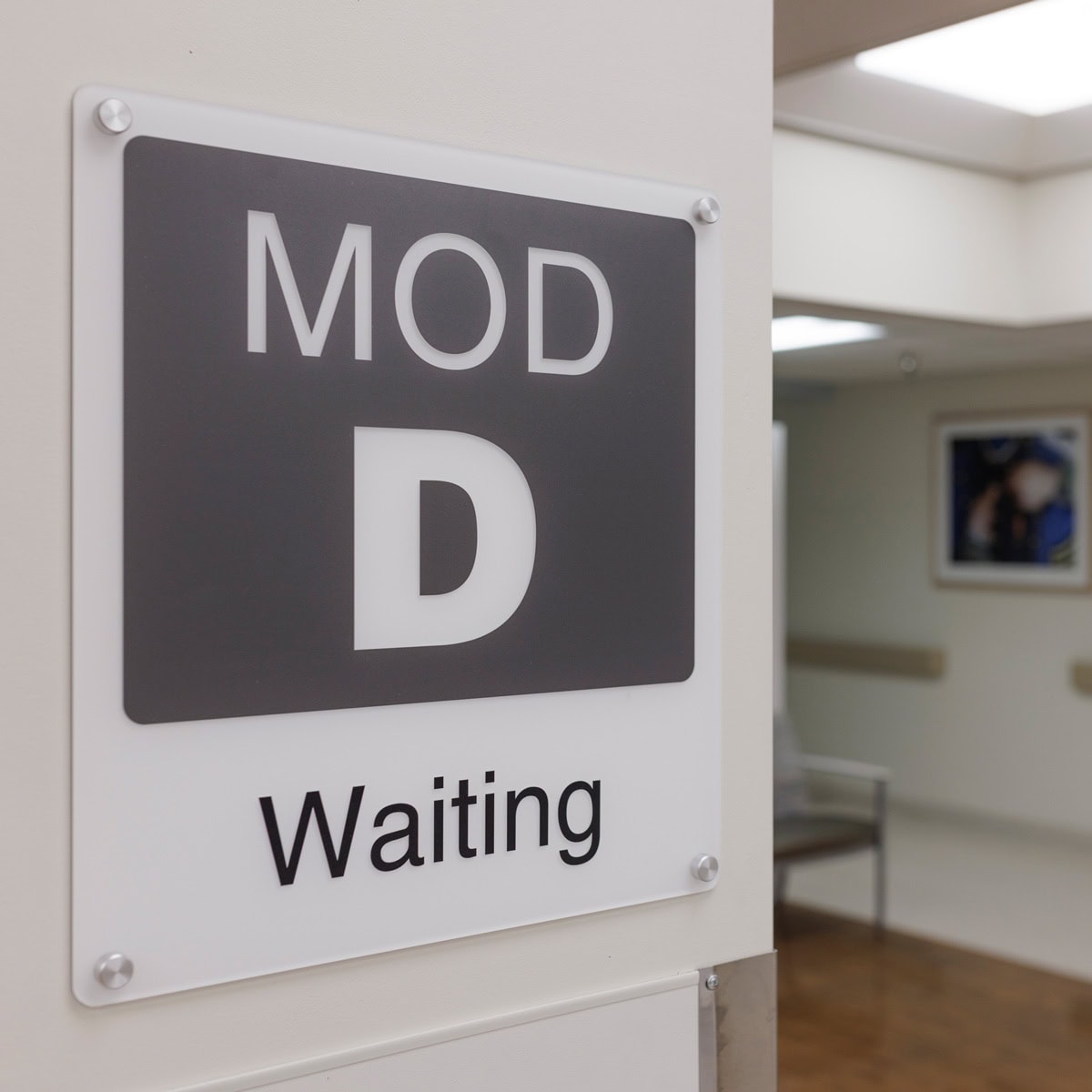
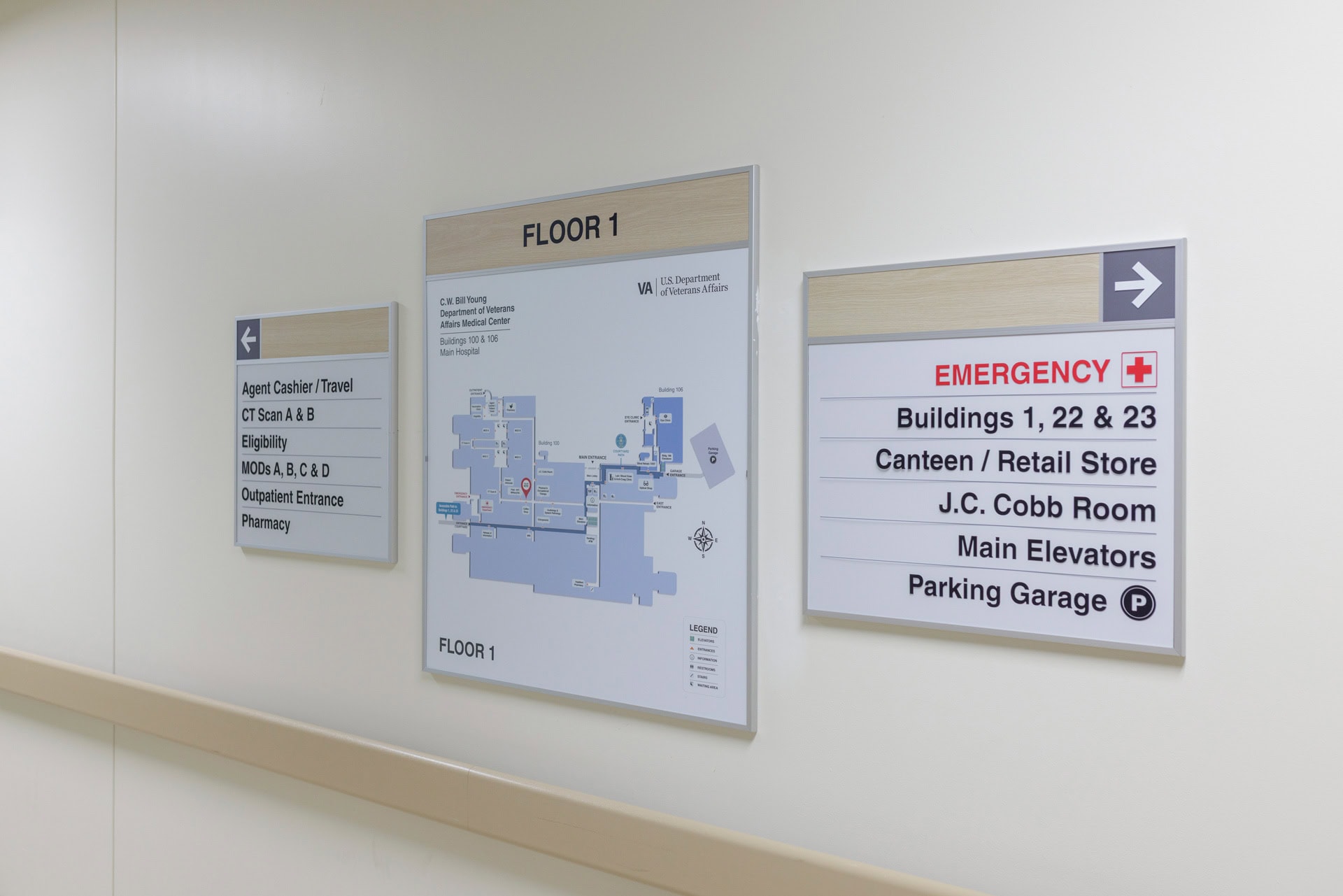
Welcoming Entrances
At each public entrance and lobby, large campus and hospital maps now provide clear orientation for visitors as they plan their routes. Mandatory policy postings were reorganized into a clean layout to reduce visual clutter and enhance the overall arrival experience.
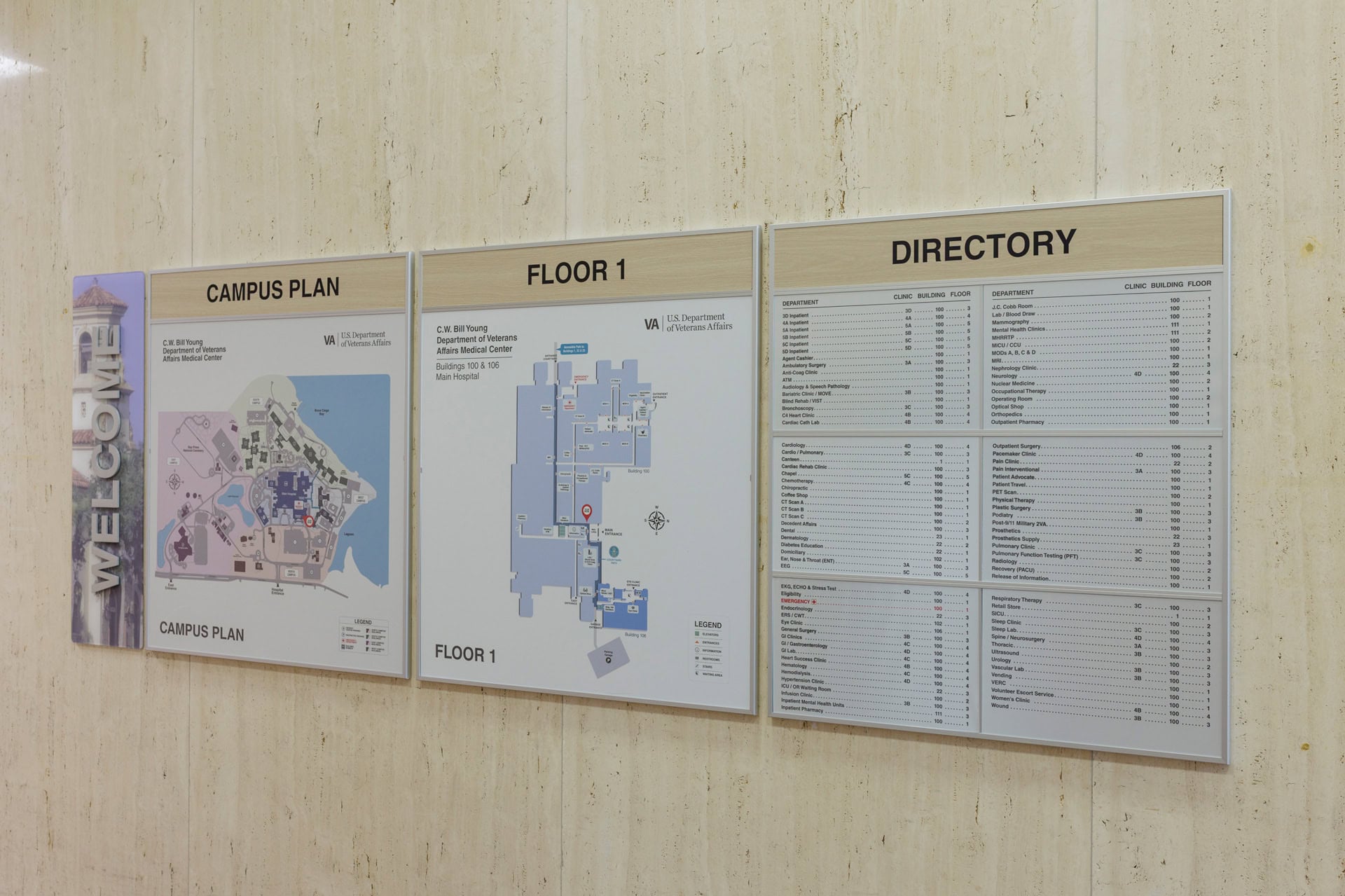
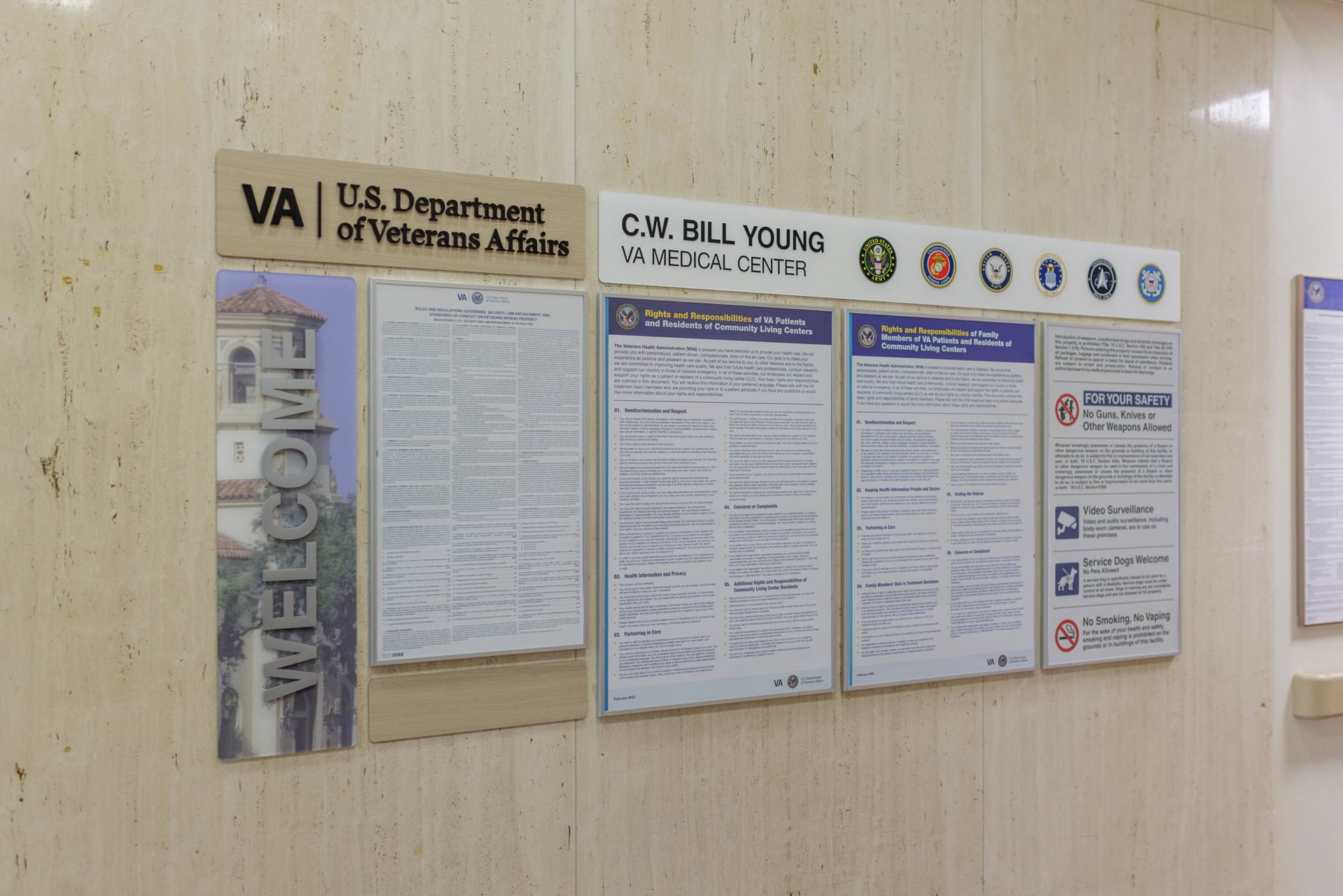
Community Living Center (CLC) Wayfinding and Neighborhood Identification
The Community Living Center provides long-term care and is designed to foster a supportive, community-like environment for Veterans. In addition to housing an Advanced Care Clinic, the facility is organized into neighborhoods identified by name, color, and theme to support memory recall for patients and their visitors.
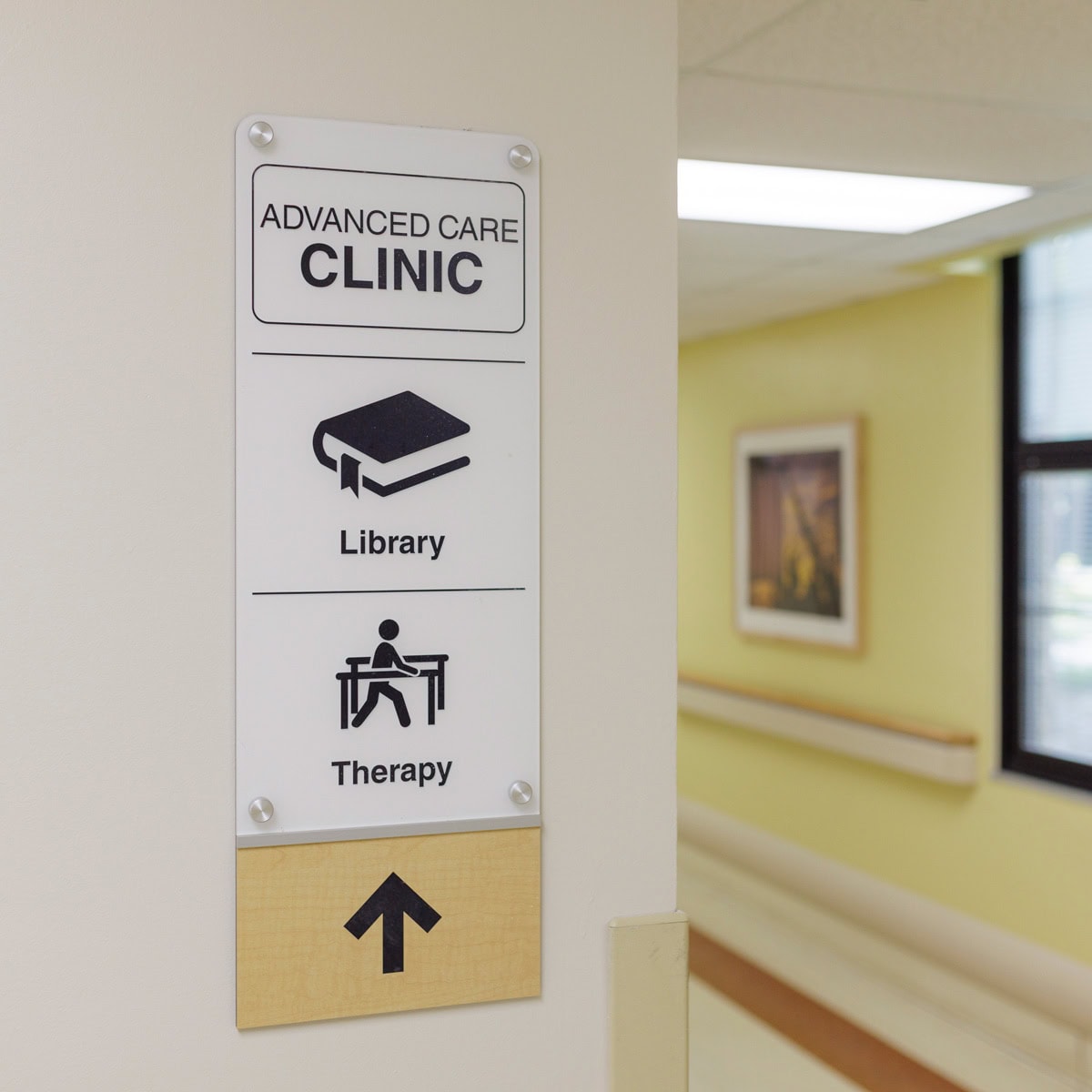
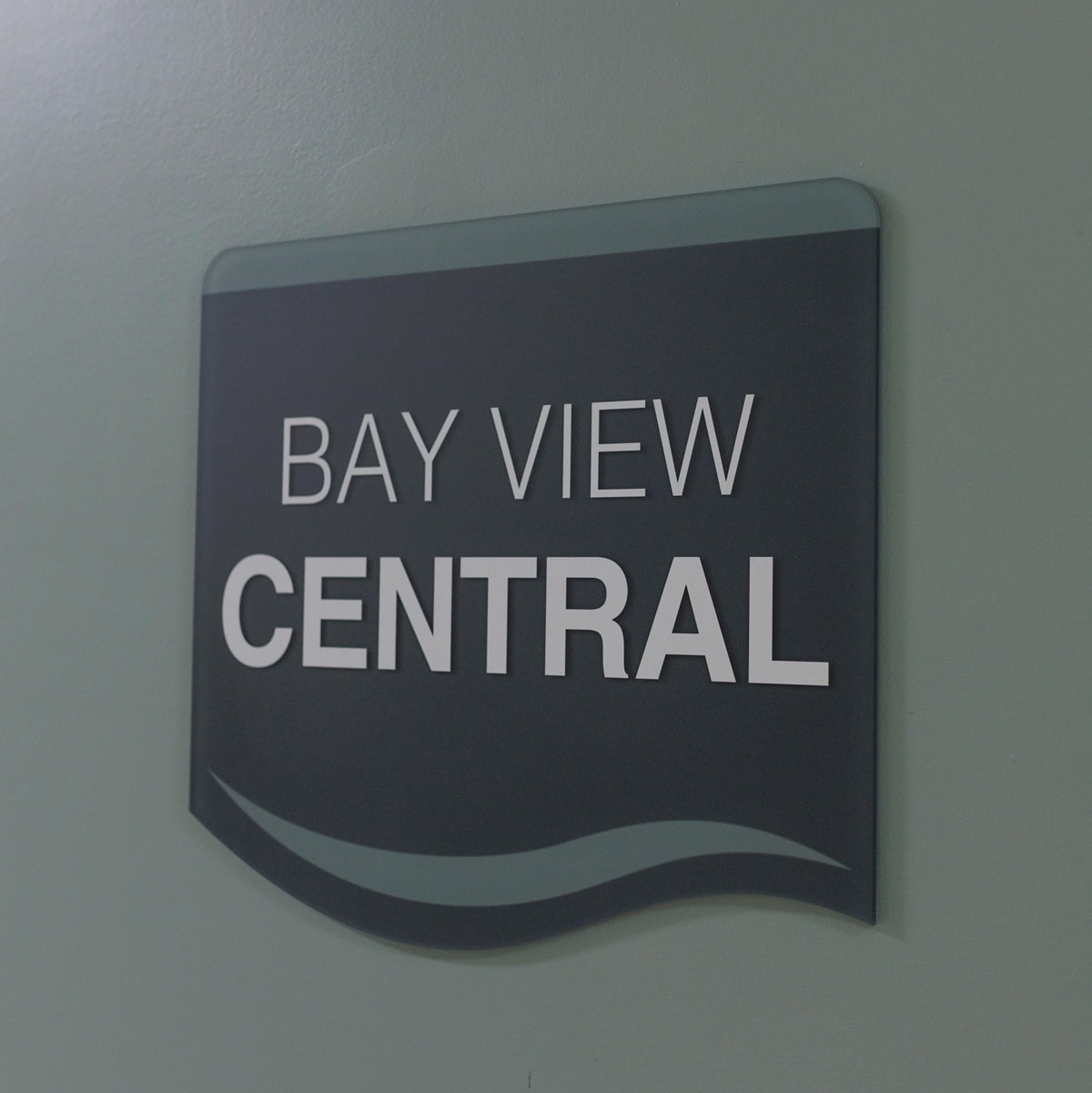
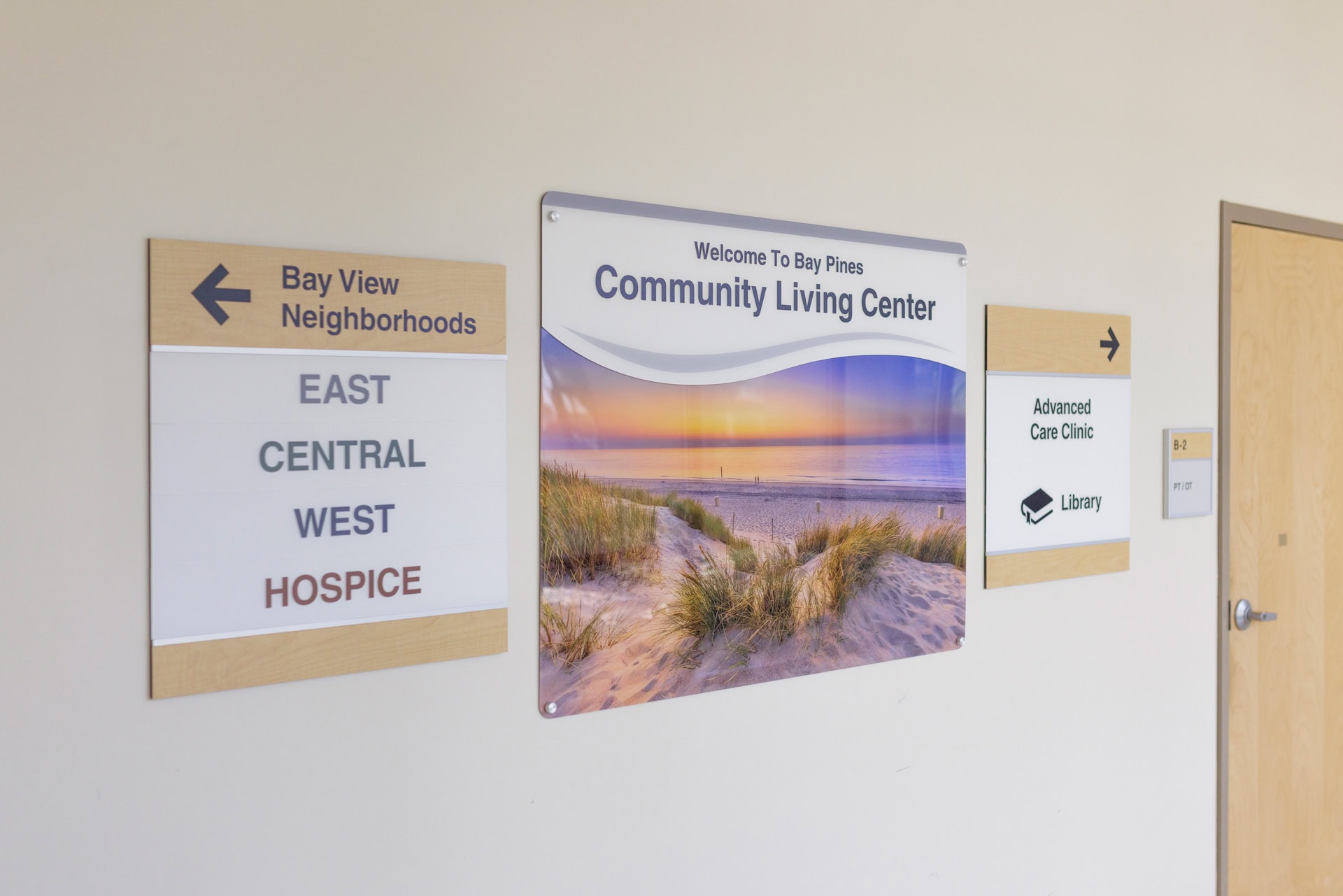
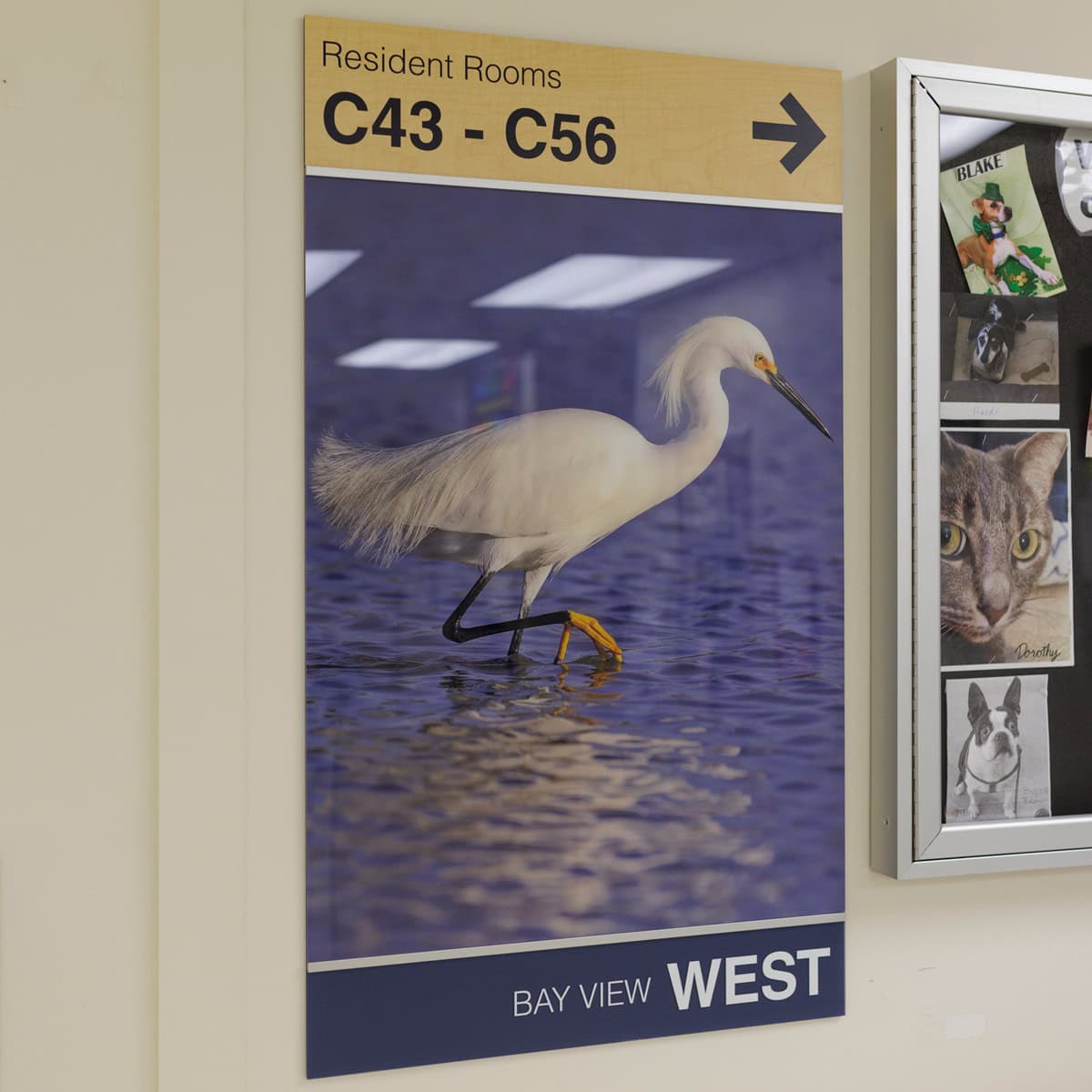
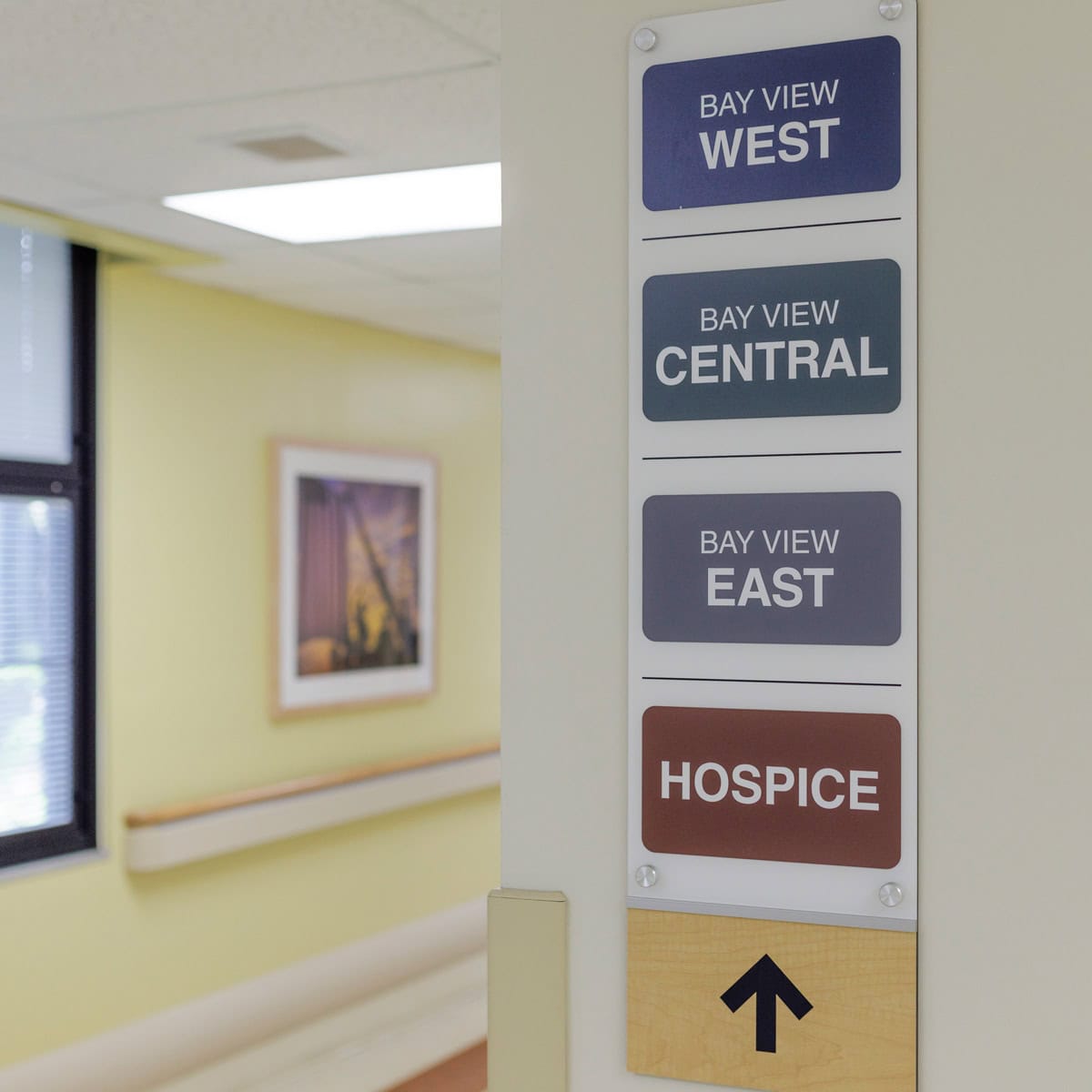
Modernizing Wayfinding to Improve Care Delivery
At VA Bay Pines, the comprehensive wayfinding transformation is more than a visual upgrade—it’s a critical infrastructure improvement that directly supports the effective delivery of care. By modernizing how patients, visitors, and staff navigate the campus, the system reduces confusion, minimizes delays, and enhances safety. Through strategic planning and scalable implementation, the project strengthens operational efficiency across one of the VA’s most active medical centers and sets a new standard for infrastructure-driven care in federal healthcare environments.
We're Here to Help.
Questions on anything you see here?

